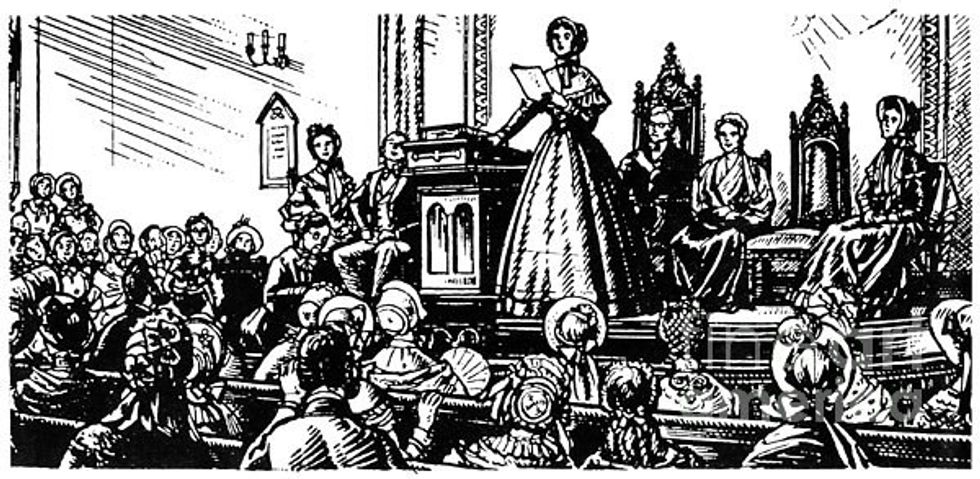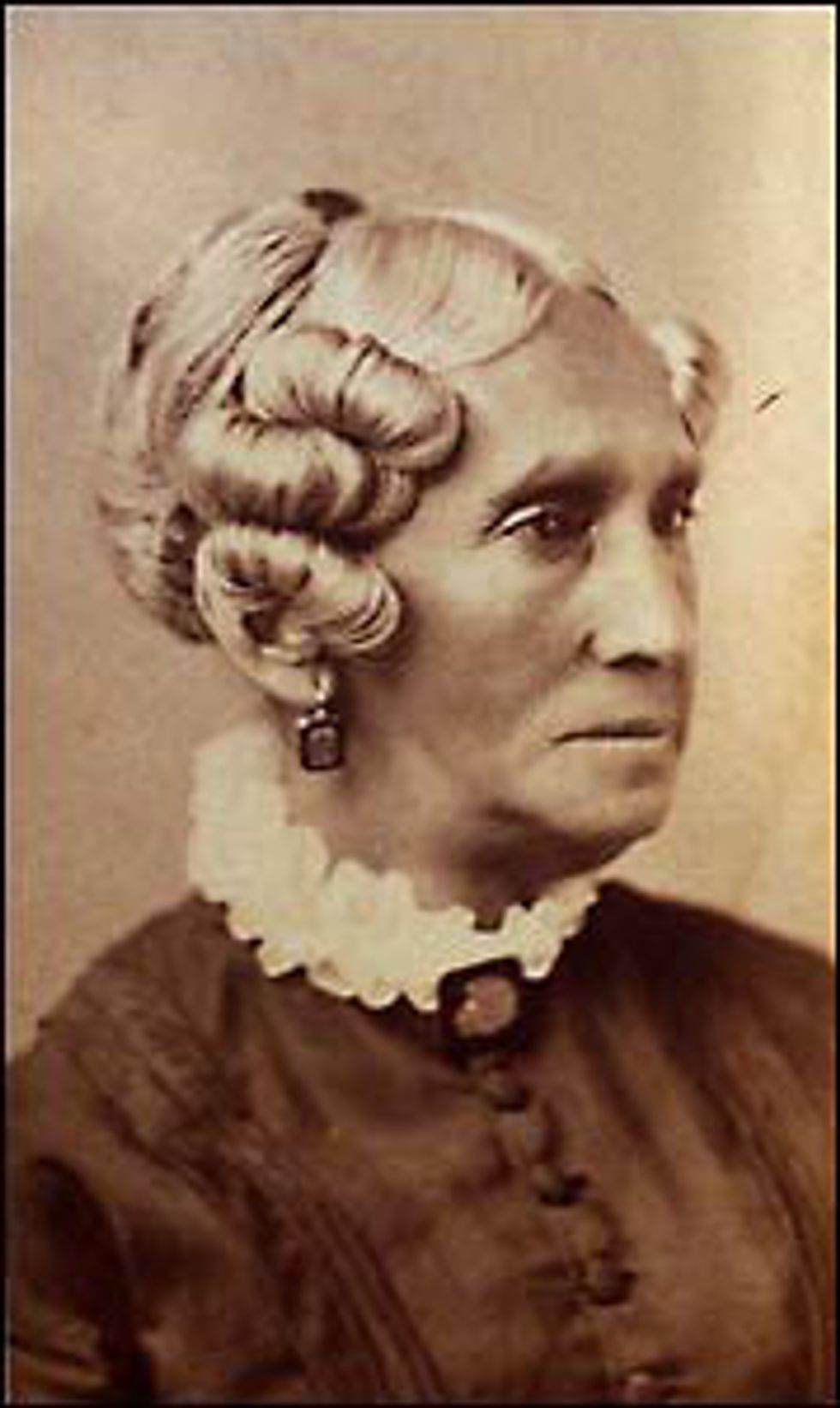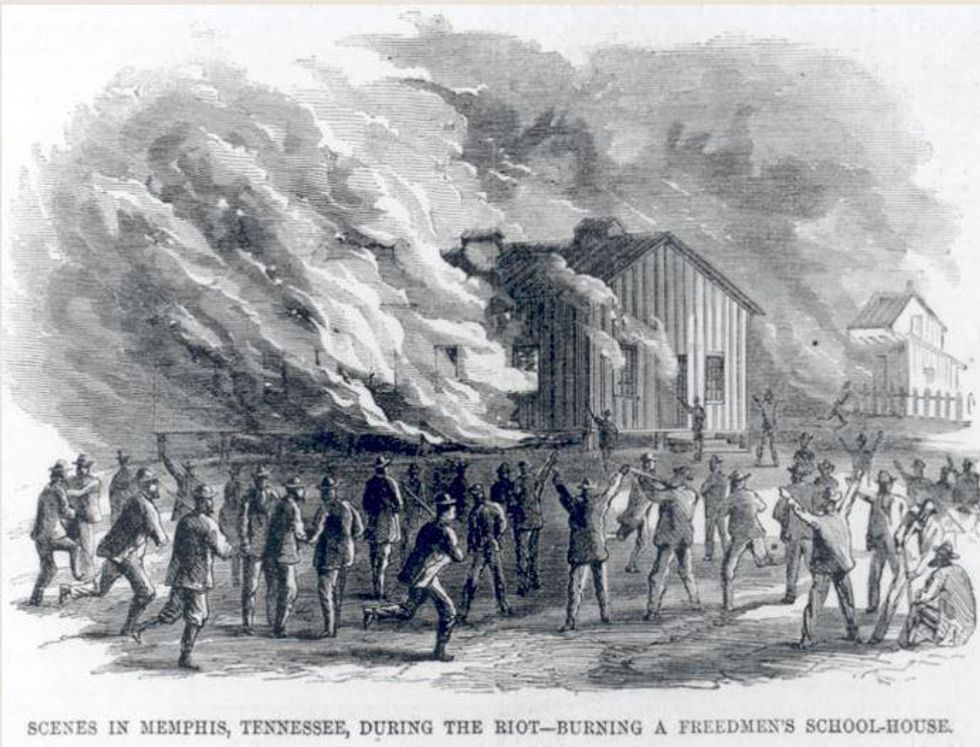Prudence Crandall was born on September 3, 1803 in Hopkinton, Rhode Island to Quakers Pardon and Esther Crandall, with three siblings. She attended the New England Friends Boarding School in Providence, Rhode Island where she learned Latin, Math and the sciences.
During this time period, most women weren’t even educated in those subjects. The Quakers, however, believed that everyone should be able to receive an education — especially women. This was a part of the Quakers “Testimony of Equality,” which is their belief that everyone is equal in the eyes of god. This belief is why they were the backbone of the abolitionist movement and started the Seneca Falls Convention in 1848, which was the first main event for the women’s suffrage movement.
Crandall’s family settled in Canterbury, Connecticut in 1813, and in 1830, she took a teaching job in Plainfield, Connecticut. In 1831, she left Plainfield and created the Canterbury Female Boarding School out of her home with the help of local lawyers, businessmen and religious leaders. She taught Canterbury’s wealthiest daughters, and her classes were strict. The school was ranked one of the top in the state.
In the fall of 1832, Crandall enrolled a twenty-year-old African-American woman named Sarah Harris, who was the daughter of a very successful farmer. Harris wanted to learn how to be an educator so that she could teach young African Americans. Remember this also — Crandall ran a boarding school which meant people had to pay to get this kind of education, so these were wealthier/middle-class African-Americans that enrolled. The white parents who had put their children in this school were absolutely outraged and threatened to take them out of the school. Crandall, however, did not care. In fact, in the spring of 1833, she announced that the school was only going to be taking African American female students.
The people of Connecticut were adamant that they were not going to let this very intelligent woman teach 'inferior' African American women how to read and write. There was even a plot by four men to destroy the school because they thought that her teachings would lead African Americans to believe that they were equal to whites. They believed that whites and blacks would start to marry each other because of it, and that was a taboo in their time. She gained support from a man named William Lloyd Garrison, a white abolitionist and creator of the newspaper, The Liberator. He put advertisements for Crandall’s school in the paper, and because of this, it became more popular — which meant that more African American girls enrolled. They intentionally did this to create controversy and have a civil rights court case.
On March 9, 1833, the town protested the school and asked the Connecticut General Assembly to close it. Crandall hired Samuel Joseph May, a Unitarian minister, and Arnold Buffum, an abolitionist leader, to represent her in General Assembly meeting because she was a woman and could not vote. The men’s main goal was to make a compromise; Crandall’s African-American Boarding school would be moved from the center of Canterbury, and in return someone would buy her house. The General Assembly didn’t listen to both of the men because they were not from Canterbury. Because they were from outside of the town, on May 16th, the Connecticut General Assembly passed the “Black Law”. This made it illegal for out of state African American students to attend Connecticut schools without the permission of the locals.
Crandall ignored the law and kept on teaching. On August 23, she was arrested and put on trail. Historians would agree that Crandall’s case was one of the first Civil Rights trials in American history. In Crandall’s first trial, her lawyers defended her saying that the “Black Law” was unconstitutional, as African-Americans were citizens and had equal rights in Connecticut since it was a free northern state. The first trial ends in a deadlocked jury. She is put before a second trial and is found guilty on the grounds that African-Americans were not citizens and did not have Constitutional rights, even if they were in a free state. Crandall then gets a subsequent trial from a higher court, which reversed the guilty verdict on the grounds that the U.S. still hadn't decided if African Americans were citizens or not. This issue didn't get resolved until the Dred Scott V. Sanford Trial went to the Supreme Court, and the verdict was that Dred Scott was not a citizen, therefore he couldn’t file a lawsuit. They even used Crandall's trial for reference in the Dred Scott decision. This decision basically made slavery nationalized across the United States, including the 'free' North, and most historians will agree that this was a major cause of the Civil War.
After the trials, Crandall went back to teaching but was harassed by the people of Canterbury. The townspeople threw stones at her and her students and spoke foul language to them. In a last effort to get the school to close, the people formed a mob; they broke all the windows of the schoolhouse and destroyed most of the furniture. The mob later attempted to burn the schoolhouse down. Fearing for the children’s safety, in 1834, Crandall had no choice but to close down the school.
Prudence Crandall then left Connecticut in 1835 with her husband Calvin Philleo, a Baptist Minister, and headed to New York to work on Philleo’s farm for a brief time. Then they moved to Illinois, where Crandall continued to teach and became a women’s rights activist who gave speeches and became part of the early woman suffrage movement. After her husband’s death in 1874, she moved in with her brother in Elk Falls, Kansas, where she eventually died in 1890.
In 1838, the “Black Law” was repealed in Connecticut. Four years before her death, the Connecticut General Assembly approved an annual pension of $400 to Crandall, in an attempt to heal the wounds of the past. The student who started it all, Sarah Harris, ended up marrying George Fayerweather, and they moved to Kingston, Rhode Island in 1855. They became active abolitionists, working with Fredrick Douglas and William Lloyd Garrison. They also were conductors on the Underground Railroad. Sarah Harris Fayerweather died on November 16, 1878 in Kingston.
After the Civil War, the Freedmen’s Bureau government program was created in an effort to teach young African-Americans in the south how to read and write. However, like most of Reconstruction, it failed because of the rise of the Ku Klux Klan. Most of the schools created were burned to the ground by the Klan.
Later on, Crandall's trails were referenced in Brown v. Board of Education 1954 (the landmark Supreme Court decision that made all public schools desegregated and overturned the “separate but equal” decision made in Plessy v. Ferguson 1896).
In the 21st century, Crandall's dream of an integrated school environment is being slowly deteriorated. This re-segregation of public schools has been from a combination of many things; public schools being funded by property taxes in poor areas, segregation in major cities, the rise of charter schools, the creation of common core, standardized testing for federal aid, media's portrayal of public schools (especially in urban areas), the constant attack on teacher’s unions, budget cuts, upper class families not enrolling their students in public schools, lack of minority instructors, teachers having to deal with students home life and racism within the political/educational system. But perhaps the biggest culprit is the idea of public schools gaining unitary status. Unitary status is a complex legal term that gives school districts the ability to jump through legal hoops to evade Brown v. Board of Education. Because of this, we are seeing segregation numbers that are higher than in the '60s, '70s and '80s.
The worst segregation that happens today is not in 'black' urban areas, but in highly populated Latino communities in California and Texas. If you are a Latino student in California that is enrolled in a public school, you will probably be a part of an 84% non-white school. Go watch movies like Stand and Deliver or McFarland, U.S.A, which tell the stories of Latino public schools that go through all the problems that I stated above. No one in the media talks about this, because segregation has always been a black and white issue.
We, as a country, have let our guard down on this issue. Because of that, we are paying the price. We used to be the poster boy for public education. When Horace Mann created the concept of Public Education in the early 1800s, it would never have been sustainable if it wasn’t for diversity.
People say that we will never be able to solve the problem of segregation; that these urban school students are just too lazy, they will never learn and white people will never go to these schools. But I have one objection for those people--look at our military. The United States Military has been desegregated since 1947, and they have done a great job with integrating everyone of color, sexuality and creed.
I’m going to end with a quote by Crandall that I believe all teachers should live by every day: “I said in my heart, here are my convictions. What shall I do? Shall I be inactive and permit prejudice, the mother of abominations, to remain undisturbed? Or shall I venture to enlist in the ranks of those who with the Sword of Truth dare hold combat with prevailing iniquity? I contemplated for a while the manner in which I might best serve the people of color. As wealth was not mine, I saw no other means of benefiting them than by imparting to those of my own sex that were anxious to learn all the instruction I might be able to give, however small the amount.”




























